
Category E longarm means any of the following-
(a) a machine gun that is a longarm;
(b) a tear gas gun or projector;
(c) a shotgun or rifle with a length of less than 75 centimetres measured
parallel to the barrel;
(d) a mortar, bazooka, rocket propelled grenade or similar large calibre
military firearm designed to fire an explosive or projectile or any
other similar prescribed firearm;
(da) a cannon which is not a black powder ball firing cannon;
(e) any other firearm prescribed for the purposes of this category;
(f) any other firearm that is declared under section 3A(1) to be a
category E longarm;
(g) any other firearm that is declared under section 3B(1)(b) to be a
category E longarm;
Reference: http://www.austlii.edu.au/au/legis/vic/consol_act/fa1996102/s3.html
(a) a machine gun that is a longarm;
(b) a tear gas gun or projector;
(c) a shotgun or rifle with a length of less than 75 centimetres measured
parallel to the barrel;
(d) a mortar, bazooka, rocket propelled grenade or similar large calibre
military firearm designed to fire an explosive or projectile or any
other similar prescribed firearm;
(da) a cannon which is not a black powder ball firing cannon;
(e) any other firearm prescribed for the purposes of this category;
(f) any other firearm that is declared under section 3A(1) to be a
category E longarm;
(g) any other firearm that is declared under section 3B(1)(b) to be a
category E longarm;
Reference: http://www.austlii.edu.au/au/legis/vic/consol_act/fa1996102/s3.html
Offence to possess, carry or use an unregistered longarm
6A. Offence to possess, carry or use an unregistered longarm
(1) A non-prohibited person must not possess, carry or use a category A or
category B longarm that is not registered.
Penalty: For a first offence, 120 penalty units or 2 years imprisonment; For a
second or subsequent offence, 1200 penalty units or 10 years imprisonment.
(2) A non-prohibited person must not possess, carry or use a category C or
category D longarm that is not registered.
Penalty: For a first offence, 240 penalty units or 4 years imprisonment; For a
second or subsequent offence, 1200 penalty units or 10 years imprisonment.
(3) A non-prohibited person must not possess, carry or use a category E
longarm that is not registered.
Penalty: For a first offence, 600 penalty units or 7 years imprisonment; For a
second or subsequent offence, 1200 penalty units or 10 years imprisonment.
(4) A non-prohibited person must not possess, carry or use a paintball marker
that is not registered.
Penalty: For a first offence, 120 penalty units or 2 years imprisonment; For a
second or subsequent offence, 1200 penalty units or 10 years imprisonment.
Reference: http://www.austlii.edu.au/au/legis/vic/consol_act/fa1996102/s6a.html
6A. Offence to possess, carry or use an unregistered longarm
(1) A non-prohibited person must not possess, carry or use a category A or
category B longarm that is not registered.
Penalty: For a first offence, 120 penalty units or 2 years imprisonment; For a
second or subsequent offence, 1200 penalty units or 10 years imprisonment.
(2) A non-prohibited person must not possess, carry or use a category C or
category D longarm that is not registered.
Penalty: For a first offence, 240 penalty units or 4 years imprisonment; For a
second or subsequent offence, 1200 penalty units or 10 years imprisonment.
(3) A non-prohibited person must not possess, carry or use a category E
longarm that is not registered.
Penalty: For a first offence, 600 penalty units or 7 years imprisonment; For a
second or subsequent offence, 1200 penalty units or 10 years imprisonment.
(4) A non-prohibited person must not possess, carry or use a paintball marker
that is not registered.
Penalty: For a first offence, 120 penalty units or 2 years imprisonment; For a
second or subsequent offence, 1200 penalty units or 10 years imprisonment.
Reference: http://www.austlii.edu.au/au/legis/vic/consol_act/fa1996102/s6a.html
Background
There has been an upsurge in interest in the use Pneumatic Antenna Launchers recently. More and more designs are appearing on the Internet and I've noted that quite a few VK's are also building and experimenting with them.
Unfortunately, these devices are illegal in the State of Victoria and probably in all other States and Territories of Australia.
Because the antenna launchers use compressed air to discharge a projectile, they fall under the classification of a Firearm in Victoria and are subject to Victoria's strict licensing laws regarding possession, use and storage of Firearms.
I have personally needed something like this device on many occasions in the past as I have set up numerous portable HF radio implementations on field days requiring antennas to be strung over high trees. In the days before slingshots were illegal, I used to use them with reasonable success to raise antennas to a height of fifty feet or more, using a small sinker and fishing line to place a pull line over the tree and then pull antenna wire after it. These days, this option is no longer legally available and the only viable solutions that I know of is to use kites if there is sufficient wind and it's in the right direction, or to use a bow and arrow which can get easily result in arrows being lodged or caught in branches.
Consequently, I've been investigating what options are available to amateurs to possess pneumatic antenna launchers legally in Victoria and you can read about my findings here.
Important Note: Keep in mind that I'm not a legal professional and this information is provided as is. The law can change through amendments and other means and you should validate the information yourself to ensure it is correct and current and consult appropriate legal services if you want to be sure of your legal position.
There has been an upsurge in interest in the use Pneumatic Antenna Launchers recently. More and more designs are appearing on the Internet and I've noted that quite a few VK's are also building and experimenting with them.
Unfortunately, these devices are illegal in the State of Victoria and probably in all other States and Territories of Australia.
Because the antenna launchers use compressed air to discharge a projectile, they fall under the classification of a Firearm in Victoria and are subject to Victoria's strict licensing laws regarding possession, use and storage of Firearms.
I have personally needed something like this device on many occasions in the past as I have set up numerous portable HF radio implementations on field days requiring antennas to be strung over high trees. In the days before slingshots were illegal, I used to use them with reasonable success to raise antennas to a height of fifty feet or more, using a small sinker and fishing line to place a pull line over the tree and then pull antenna wire after it. These days, this option is no longer legally available and the only viable solutions that I know of is to use kites if there is sufficient wind and it's in the right direction, or to use a bow and arrow which can get easily result in arrows being lodged or caught in branches.
Consequently, I've been investigating what options are available to amateurs to possess pneumatic antenna launchers legally in Victoria and you can read about my findings here.
Important Note: Keep in mind that I'm not a legal professional and this information is provided as is. The law can change through amendments and other means and you should validate the information yourself to ensure it is correct and current and consult appropriate legal services if you want to be sure of your legal position.
Tuesday, 11th Oct 2010 17:40
Ignorance Of The Law Is No Excuse
Firstly, after doing some preliminary investigation into the legalities of using these devices in Victoria, I was surprised to find many people disregarded my concerns, claiming that they would plead ignorant in the event that they were asked about possession of these devices.
Unfortunately, ignorance of the law is not upheld as an excuse in legal circles, so hopefully I can pass on these findings and prevent someone from getting themselves into a difficult legal predicament.
The Definition of 'Firearm' in Victoria
According to the Victorian Firearms Act 1996 - SECT 3 - Definitions;
Firstly, after doing some preliminary investigation into the legalities of using these devices in Victoria, I was surprised to find many people disregarded my concerns, claiming that they would plead ignorant in the event that they were asked about possession of these devices.
Unfortunately, ignorance of the law is not upheld as an excuse in legal circles, so hopefully I can pass on these findings and prevent someone from getting themselves into a difficult legal predicament.
The Definition of 'Firearm' in Victoria
According to the Victorian Firearms Act 1996 - SECT 3 - Definitions;
Pneumatic Antenna Launchers in Australia
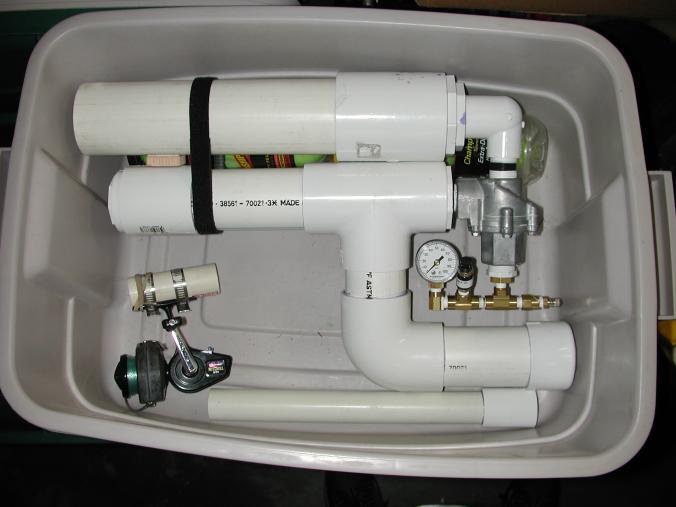
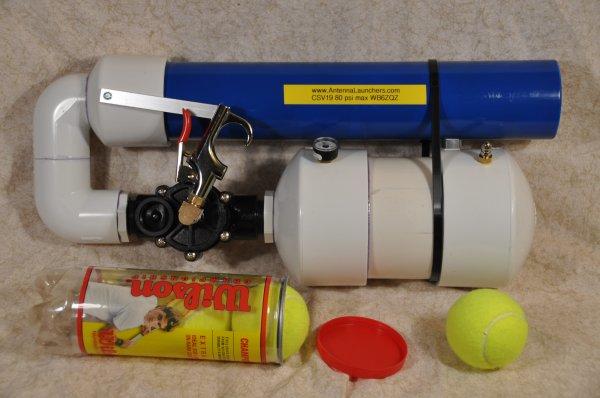
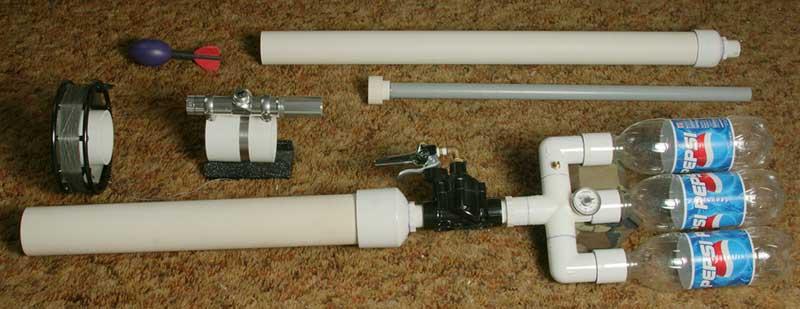
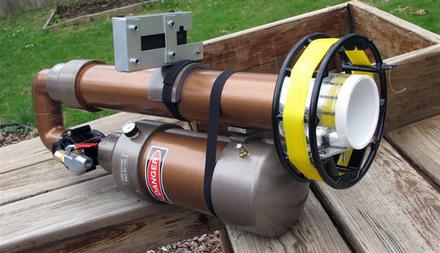
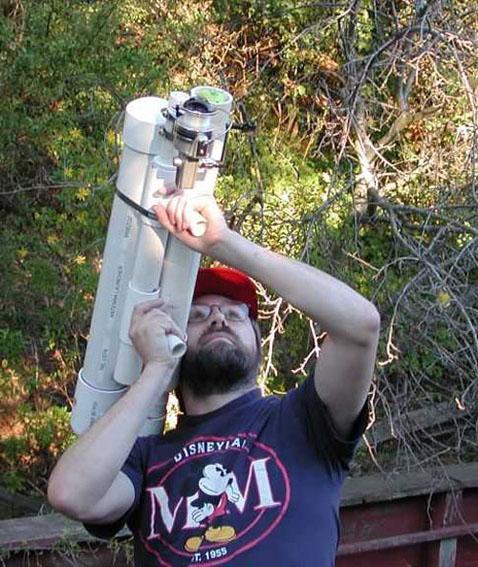
firearm means any device, whether or not assembled or in parts-
(a) which is designed or adapted to discharge shot or a bullet or other
missile by the expansion of gases produced in the device by the
ignition of strongly combustible materials or by compressed air or
other gases, whether stored in the device in pressurised containers or
produced in the device by mechanical means; and
(b) whether or not operable or complete or temporarily or permanently
inoperable or incomplete- and which is not-
(c) an industrial tool powered by cartridges containing gunpowder or
compressed air or other gases which is designed and intended for use
for fixing fasteners or plugs or for similar purposes; or
(d) a captive bolt humane killer; or
(e) a spear gun designed for underwater use; or
(f) a device designed for the discharge of signal flares; or
* * * * *
(h) a device commonly known as a kiln gun or ringblaster, designed
specifically for knocking out or down solid material in kilns,
furnaces or cement silos; or
(i) a device commonly known as a line thrower designed for establishing
lines between structures or natural features and powered by compressed
air to other compressed gases and used for rescue purposes, rescue
training or rescue demonstration; or
(j) a device of a prescribed class;
Reference: http://www.austlii.edu.au/au/legis/vic/consol_act/fa1996102/s3.html
(a) which is designed or adapted to discharge shot or a bullet or other
missile by the expansion of gases produced in the device by the
ignition of strongly combustible materials or by compressed air or
other gases, whether stored in the device in pressurised containers or
produced in the device by mechanical means; and
(b) whether or not operable or complete or temporarily or permanently
inoperable or incomplete- and which is not-
(c) an industrial tool powered by cartridges containing gunpowder or
compressed air or other gases which is designed and intended for use
for fixing fasteners or plugs or for similar purposes; or
(d) a captive bolt humane killer; or
(e) a spear gun designed for underwater use; or
(f) a device designed for the discharge of signal flares; or
* * * * *
(h) a device commonly known as a kiln gun or ringblaster, designed
specifically for knocking out or down solid material in kilns,
furnaces or cement silos; or
(i) a device commonly known as a line thrower designed for establishing
lines between structures or natural features and powered by compressed
air to other compressed gases and used for rescue purposes, rescue
training or rescue demonstration; or
(j) a device of a prescribed class;
Reference: http://www.austlii.edu.au/au/legis/vic/consol_act/fa1996102/s3.html
Clearly the pneumatic antenna launcher fits the above definition of a firearm. We can see it hasn't been exempted by Section 3(i) because, unfortunately, amateur radio does not constitute "used for rescue purposes, rescue training or rescue demonstration" even though amateur radio is acknowledged as being a service which is used in disasters and national emergency response and training.
So upon accepting that the device is clearly a firearm by definition, the next step is to determine what 'Category' of firearm it is.
On first appearances one could consider the antenna launchers to be air rifles as per the following definition (from the equivalent Tasmanian legislation):
"Air rifle" means a firearm that propels, or is capable of propelling, a projectile by means of compressed gas or air;
Reference: http://www.austlii.edu.au/au/legis/tas/consol_act/fa1996102/s3.html
and this infers that the Firearm Category for this type of device would fall into the following definition:
Category A longarm means any of the following-
(a) an airgun;
(b) a rimfire rifle (other than a semi-automatic rimfire rifle);
(c) a shotgun (other than a pump action or semi-automatic shotgun);
(d) any combination of a shotgun and rimfire rifle
Reference: http://www.austlii.edu.au/au/legis/vic/consol_act/fa1996102/s3.html
however, another section of the Act mentions the following:
(1) The Chief Commissioner, by instrument, may declare a firearm or type of
firearm that would otherwise be a category A longarm, category B longarm or
category C longarm to be-
(a) a category D longarm; or
(b) a category E longarm -
if the Chief Commissioner is satisfied that the firearm or type of firearm
subject to the declaration is designed or adapted for military purposes, or
substantially duplicates a firearm of that type in design, function or
appearance.
Reference: http://www.austlii.edu.au/au/legis/vic/consol_act/fa1996102/s3b.html
Reference: http://www.austlii.edu.au/au/legis/tas/consol_act/fa1996102/s3.html
and this infers that the Firearm Category for this type of device would fall into the following definition:
Category A longarm means any of the following-
(a) an airgun;
(b) a rimfire rifle (other than a semi-automatic rimfire rifle);
(c) a shotgun (other than a pump action or semi-automatic shotgun);
(d) any combination of a shotgun and rimfire rifle
Reference: http://www.austlii.edu.au/au/legis/vic/consol_act/fa1996102/s3.html
however, another section of the Act mentions the following:
(1) The Chief Commissioner, by instrument, may declare a firearm or type of
firearm that would otherwise be a category A longarm, category B longarm or
category C longarm to be-
(a) a category D longarm; or
(b) a category E longarm -
if the Chief Commissioner is satisfied that the firearm or type of firearm
subject to the declaration is designed or adapted for military purposes, or
substantially duplicates a firearm of that type in design, function or
appearance.
Reference: http://www.austlii.edu.au/au/legis/vic/consol_act/fa1996102/s3b.html
Unfortunately, in the case of pneumatic antenna launchers, that's what the Chief Commissioner appears to have declared. I recently corresponded with the Licensing & Regulation Division and an extract of their reply is shown below:
"Please be advised that Pneumatic Antenna Line Launchers are defined as a Category E Longarm under the Firearms Act 1996 and require a Category E Longarm Licence to possess such a device in Victoria.
There are no provisions under the Firearms Act 1996 to allow the possession and use of this device for amateur radio operators.
Suggested changes to the Firearms Act 1996 should be directed to the Department of Justice.
Should you have any further queries please email licensingregulation@police.vic.gov.au"
I am currently requesting further particulars in relation to registration of the devices as Category E Longarms and am expecting a response soon. I will provide updates as they become available.
The Victoria Police L&RD can be found at http://www.police.vic.gov.au/content.asp?Document_ID=114
In order to apply for a Category E Longarms License, applicants must possess a genuine reason for the license.
Section 13 of the Act defines the conditions:
Penalties for Unregistered Pneumatic Antenna Launchers in Victoria
Since pneumatic antenna launchers currently fall under the Firearms Act 1996 and associated legislation, anyone using such devices without appropriate registration and licensing leaves themselves liable to be charged and prosecuted.
Unlike the lesser category of Firearms however, Category E Firearm penalties are significant, most likely due to the fact that the legislation that was designed to deter people from illegally possessing or using these devices was probably assuming that they'd be dealing with military ordinance or devices with similar capabilities.
According to the Victorian Firearms Act 1996 - SECT 6A -
Since pneumatic antenna launchers currently fall under the Firearms Act 1996 and associated legislation, anyone using such devices without appropriate registration and licensing leaves themselves liable to be charged and prosecuted.
Unlike the lesser category of Firearms however, Category E Firearm penalties are significant, most likely due to the fact that the legislation that was designed to deter people from illegally possessing or using these devices was probably assuming that they'd be dealing with military ordinance or devices with similar capabilities.
According to the Victorian Firearms Act 1996 - SECT 6A -
Firearms Act 1996 - SECT 13
Reasons for applying for a longarm licence, category E
13. Reasons for applying for a longarm licence, category E
(1) The Chief Commissioner must not issue a longarm licence for category E
longarms unless-
(a) the applicant can demonstrate that the licence is required for an
official, commercial or prescribed purpose or for a purpose authorised
by an Act or regulations; and
(b) if the application is in respect of more than one category E longarm,
the applicant can demonstrate a compelling reason for more than one
such longarm to be possessed, carried or used under the licence.
(2) For the purposes of demonstrating that the licence is required for a
purpose specified in subsection (1)(a), the applicant must produce evidence
that the licence is required for that purpose.
Reference: http://www.austlii.edu.au/au/legis/vic/consol_act/fa1996102/s13.html
Reasons for applying for a longarm licence, category E
13. Reasons for applying for a longarm licence, category E
(1) The Chief Commissioner must not issue a longarm licence for category E
longarms unless-
(a) the applicant can demonstrate that the licence is required for an
official, commercial or prescribed purpose or for a purpose authorised
by an Act or regulations; and
(b) if the application is in respect of more than one category E longarm,
the applicant can demonstrate a compelling reason for more than one
such longarm to be possessed, carried or used under the licence.
(2) For the purposes of demonstrating that the licence is required for a
purpose specified in subsection (1)(a), the applicant must produce evidence
that the licence is required for that purpose.
Reference: http://www.austlii.edu.au/au/legis/vic/consol_act/fa1996102/s13.html
What is a Category E Longarm?
Well, you may be surprised. As an amateur radio operator who wants to use a homebrew pneumatic antenna launcher in Victoria, you'll need to get a Firearms License that is intended to restrict access to the following:
Well, you may be surprised. As an amateur radio operator who wants to use a homebrew pneumatic antenna launcher in Victoria, you'll need to get a Firearms License that is intended to restrict access to the following:
Submission to WIA
I submitted an email to various groups within the WIA seeking comment regarding their interest in supporting VK amateurs in addressing the possibility of having the legislation reviewed with the intent of modifying Section 3(i) to include Radio Amateurs. I am still waiting on an acknowledgement or response.
I also have lodged an enquiry with the Victorian Department of Justice and I have not received a response to date.
My original email to the WIA follows:
I'm not sure whether you're aware of the growing popularity of pneumatic antenna launchers for raising wire antennas in portable operations, however a Google search using the term 'pneumatic antenna launcher' will return many results describing the build and functionality of these devices. One example is http://antennalaunchers.com/csv19/
Unfortunately, because Victorian Firearm's Legislation classifies anything that discharges a projectile by means of compressed air or other gases, or by the expansion of gases,a firearm, anyone using such a device is breaking the law and can be charged with possession of an unregistered firearm; using a firearm in a public place etc.
This legislation is obviously meant to protect the public from people making their own firearms or potato cannons and the like, but in the case of amateur radio, I believe that it is justified to possess and use such a device for raising antennas in the field, if basic safety precautions are observed.
I would like to propose an amendment to the Firearms Act 1996 - SECT 3 to modify section (i) to include Amateur Radio Field Operations.
Would the W.I.A. be in a position to pursue this on behalf of amateurs in VK3?
Note that hunting slings, slingshots, catapults, shanghais used by amateur radio operators where the articles are used in pursuit of that hobby have apparently been exempted previously according to an extract from the Victoria Police Gazette (1/6/92 - Item 15).
Slingshots are prohibited weapons in Victoria so there is precedence for exemptions to be granted. I'm not aware if this exemption is still current as I have not been able to obtain a copy of the relevant document.
An extract of the relevant section in the Firearms Act 1996 Act is copied below:
Under the Firearms Act 1996 - SECT 3, firearm means any device, whether or not assembled or in parts and whether or not operable or complete or temporarily or permanently inoperable or incomplete-
(a) which is designed or adapted to discharge shot or a bullet or other
missile by the expansion of gases produced in the device by the
ignition of strongly combustible materials or by compressed air or
other gases, whether stored in the device in pressurised containers or
produced in the device by mechanical means; or
(b) which has the appearance of such a device- and which is not-
(c) an industrial tool powered by cartridges containing gunpowder or
compressed air or other gases which is designed and intended for use
for fixing fasteners or plugs or for similar purposes; or
(d) a captive bolt humane killer; or
(e) a spear gun designed for underwater use; or
(f) a device designed for the discharge of signal flares; or
* * * * *
(h) a device commonly known as a kiln gun or ringblaster, designed
specifically for knocking out or down solid material in kilns,
furnaces or cement silos; or
(i) a device commonly known as a line thrower designed for establishing
lines between structures or natural features and powered by compressed
air to other compressed gases and used for rescue purposes, rescue
training or rescue demonstration; or
(j) a device of a prescribed class;
The proposed amendment would be:
" (i) a device commonly known as a line thrower designed for establishing
lines between structures or natural features and powered by compressed
air to other compressed gases and used for rescue purposes, rescue
training or rescue demonstration, or used by licensed amateur radio operators where the articles are used in pursuit of that hobby; or "
An inferior alternative option would be for the WIA to apply for a Chief Commissioner's Approval as per the information on the following URL:
http://www.police.vic.gov.au/content.asp?Document_ID=25560 This is a less preferred option due to the significant ongoing fees and charges involved.
I'd suggest that the legislation is probably similar in all States and Territories and that this issue would affect Amateur Radio Operators Australia wide. Consequently it should be addressed proactively, rather than reactively, as having Police 'firearm criminal history warning flags' associated with an otherwise law abiding individual can be quite a liability.
Regards,
Ben VK3KBC.
I submitted an email to various groups within the WIA seeking comment regarding their interest in supporting VK amateurs in addressing the possibility of having the legislation reviewed with the intent of modifying Section 3(i) to include Radio Amateurs. I am still waiting on an acknowledgement or response.
I also have lodged an enquiry with the Victorian Department of Justice and I have not received a response to date.
My original email to the WIA follows:
I'm not sure whether you're aware of the growing popularity of pneumatic antenna launchers for raising wire antennas in portable operations, however a Google search using the term 'pneumatic antenna launcher' will return many results describing the build and functionality of these devices. One example is http://antennalaunchers.com/csv19/
Unfortunately, because Victorian Firearm's Legislation classifies anything that discharges a projectile by means of compressed air or other gases, or by the expansion of gases,a firearm, anyone using such a device is breaking the law and can be charged with possession of an unregistered firearm; using a firearm in a public place etc.
This legislation is obviously meant to protect the public from people making their own firearms or potato cannons and the like, but in the case of amateur radio, I believe that it is justified to possess and use such a device for raising antennas in the field, if basic safety precautions are observed.
I would like to propose an amendment to the Firearms Act 1996 - SECT 3 to modify section (i) to include Amateur Radio Field Operations.
Would the W.I.A. be in a position to pursue this on behalf of amateurs in VK3?
Note that hunting slings, slingshots, catapults, shanghais used by amateur radio operators where the articles are used in pursuit of that hobby have apparently been exempted previously according to an extract from the Victoria Police Gazette (1/6/92 - Item 15).
Slingshots are prohibited weapons in Victoria so there is precedence for exemptions to be granted. I'm not aware if this exemption is still current as I have not been able to obtain a copy of the relevant document.
An extract of the relevant section in the Firearms Act 1996 Act is copied below:
Under the Firearms Act 1996 - SECT 3, firearm means any device, whether or not assembled or in parts and whether or not operable or complete or temporarily or permanently inoperable or incomplete-
(a) which is designed or adapted to discharge shot or a bullet or other
missile by the expansion of gases produced in the device by the
ignition of strongly combustible materials or by compressed air or
other gases, whether stored in the device in pressurised containers or
produced in the device by mechanical means; or
(b) which has the appearance of such a device- and which is not-
(c) an industrial tool powered by cartridges containing gunpowder or
compressed air or other gases which is designed and intended for use
for fixing fasteners or plugs or for similar purposes; or
(d) a captive bolt humane killer; or
(e) a spear gun designed for underwater use; or
(f) a device designed for the discharge of signal flares; or
* * * * *
(h) a device commonly known as a kiln gun or ringblaster, designed
specifically for knocking out or down solid material in kilns,
furnaces or cement silos; or
(i) a device commonly known as a line thrower designed for establishing
lines between structures or natural features and powered by compressed
air to other compressed gases and used for rescue purposes, rescue
training or rescue demonstration; or
(j) a device of a prescribed class;
The proposed amendment would be:
" (i) a device commonly known as a line thrower designed for establishing
lines between structures or natural features and powered by compressed
air to other compressed gases and used for rescue purposes, rescue
training or rescue demonstration, or used by licensed amateur radio operators where the articles are used in pursuit of that hobby; or "
An inferior alternative option would be for the WIA to apply for a Chief Commissioner's Approval as per the information on the following URL:
http://www.police.vic.gov.au/content.asp?Document_ID=25560 This is a less preferred option due to the significant ongoing fees and charges involved.
I'd suggest that the legislation is probably similar in all States and Territories and that this issue would affect Amateur Radio Operators Australia wide. Consequently it should be addressed proactively, rather than reactively, as having Police 'firearm criminal history warning flags' associated with an otherwise law abiding individual can be quite a liability.
Regards,
Ben VK3KBC.
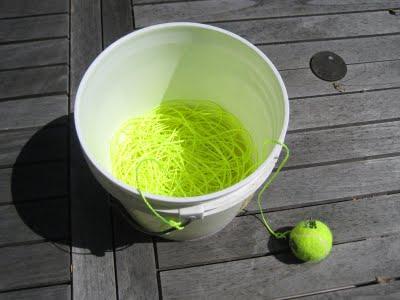
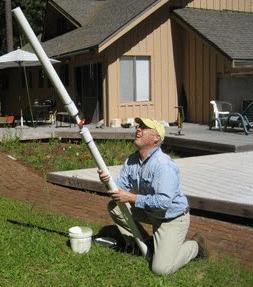
The original intent of the Category E Firearm Classification
When the Hon. Mr W. D. McGRATH (Minister for Police and Emergency Services) introduced the second reading of the Firearms Bill to the House of Assembly in 1996 in response to the Port Arthur Tragedy, he presented a case for a Category E firearm in the following way:
Category E firearms
The current Firearms Act 1958 is ambiguous about a range of additional types of specialised, high-risk firearms, including cannons, bazookas, rocket-launchers and large-calibre military armaments in the hands of private individuals and collectors. These articles conform to the definition of firearm but are not currently regulated and have not been directly addressed in the national firearms agreement. In order to make the strict regulations and controls on these firearms transparent, a further prohibited firearms licence category, for category E firearms, is established in the bill to regulate these firearms as well as machine-guns, tear gas gun projectors, shortened shotguns or rifles and any other prescribed firearm.
Licences for category E firearms should never be issued for general use.
Licences for category E firearms will be issued only in the most exceptional circumstances, such as for film production work, for commercial purposes associated with licensing suppliers to military and police forces or in historical re-enactments by reputable historical re-enactment groups. In those rare cases where licences for category E firearms are issued by the chief commissioner, it would normally be on the basis that the firearms are made permanently inoperable or able to fire only blank ammunition. The chief commissioner is empowered by the bill to make any licences issued heavily conditional as regards both the locations where the firearms can be held and the storage requirements for the firearms.
When the Hon. Mr W. D. McGRATH (Minister for Police and Emergency Services) introduced the second reading of the Firearms Bill to the House of Assembly in 1996 in response to the Port Arthur Tragedy, he presented a case for a Category E firearm in the following way:
Category E firearms
The current Firearms Act 1958 is ambiguous about a range of additional types of specialised, high-risk firearms, including cannons, bazookas, rocket-launchers and large-calibre military armaments in the hands of private individuals and collectors. These articles conform to the definition of firearm but are not currently regulated and have not been directly addressed in the national firearms agreement. In order to make the strict regulations and controls on these firearms transparent, a further prohibited firearms licence category, for category E firearms, is established in the bill to regulate these firearms as well as machine-guns, tear gas gun projectors, shortened shotguns or rifles and any other prescribed firearm.
Licences for category E firearms should never be issued for general use.
Licences for category E firearms will be issued only in the most exceptional circumstances, such as for film production work, for commercial purposes associated with licensing suppliers to military and police forces or in historical re-enactments by reputable historical re-enactment groups. In those rare cases where licences for category E firearms are issued by the chief commissioner, it would normally be on the basis that the firearms are made permanently inoperable or able to fire only blank ammunition. The chief commissioner is empowered by the bill to make any licences issued heavily conditional as regards both the locations where the firearms can be held and the storage requirements for the firearms.
In reviewing this Bill, it doesn't appear that Pneumatic Antenna Launchers are 'Ejusdem Generis' with the devices listed under the Category E Classification and it's possible that they have been allotted this classification in the absence of an appropriate alternative.
As an amateur radio operator with a genuine need to use a pneumatic antenna launcher in Victoria, I'll try and investigate what the likelihood is of being able to practically construct and legally register these devices within the bounds of the current legislation in parallel with examining options to have Section 3(i) of the Firearms Act 1996 amended. I'll update this site as further information becomes available.
As an amateur radio operator with a genuine need to use a pneumatic antenna launcher in Victoria, I'll try and investigate what the likelihood is of being able to practically construct and legally register these devices within the bounds of the current legislation in parallel with examining options to have Section 3(i) of the Firearms Act 1996 amended. I'll update this site as further information becomes available.
Reference: http://tinyurl.com/Firearms-Bill-1996
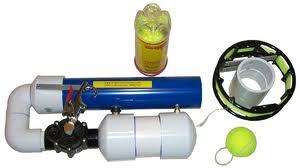
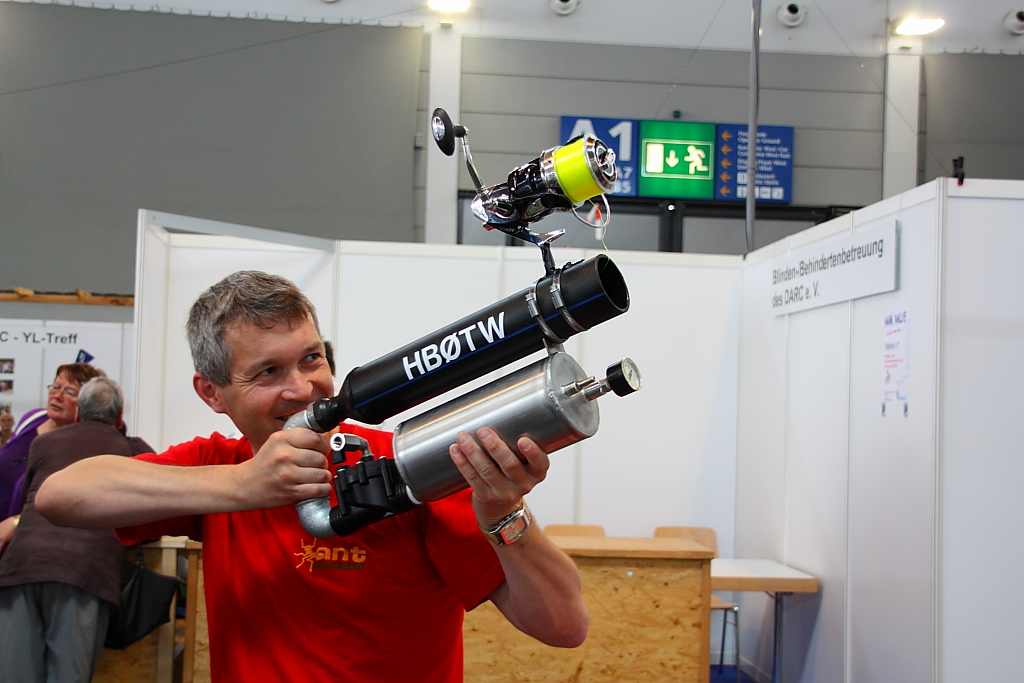
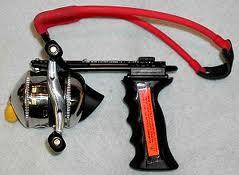
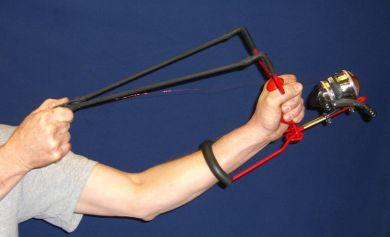


Search

Legal Precedence For Requesting an Exemption
When the Hon. Mr W. D. McGRATH introduced the Firearms Bill in 1996, I don't think that he, nor any of his consultative team had considered pneumatic antenna launchers in drafting the legislation.
My research has not uncovered any launchers that existed at that time in the form that are now commonly found listed on the Internet. It's possible that they did exist, but were not as prevalent. Commercial units for maritime and military use have been available for decades, however these operate using .22 calibre blank firearm cartridges or special explosive charges to generate the pressures required to launch their ballistic loads and lines over much greater distances and are made of special metals similar to conventional firearms.
Given that it's unlikely that amateur radio operators have been given an opportunity to state their case for the ability to use a low powered plastic or light gauge metal version of such a device capable of discharging a tennis ball over say 50 metres, we need to examine the possibility of legal change and whether other prohibited items have been previously exempted for similar amateur interest groups.
The Use of Slingshots by Amateur Radio Operators
When an Australian Amateur Radio Operator uses a catapult to sling a rope over a tree to erect an antenna he or she is, technically, breaking the law.
A number of years ago, the late Ken Gott, VK3AJU, wrote to the Minister of Police and Emergency
Services asking that amateurs be excluded from sections of the Prescribed Weapons Act 1989 which
made our use of catapults illegal.
Ken was successful in his endeavours and subsequently received a letter from the then Director of Criminal Justice which said, in part:
... Sections 4(j) and (k) [which relate to slingshots] do not apply to amateur radio operators when used in pursuit of their hobby.
This fact was subsequently published in the March 1990 edition of “Amateur Radio”. However, the exemption refers to the Prescribed Weapons Regulations 1989 which have, subsequently, been repealed.
The relevant legislation is now the Control of Weapons Regulations Act 1990 (with many Amendments) and this does not include the exemption.
Clarification was subsequently requested from Victoria Police and a letter received from Superintendent Murray Adams at the time contained advise from Mr Raymond Loh, Assistant Legal Adviser to the Chief Commissioner of Police (amounting to four pages), where his final paragraph stated:
“It is my view that the exemption order of the Governor-in-Council ... made on 19 December 1989 is still valid and applicable under the current legislation.”
Reference: WICEN News May 1996 Edition
Note that although I have not doubt as to the validity of this information, (the exemption was also noted in the Victoria Police Gazette 1/6/92 - Item 15), the current Act has not been amended to include the wording and therefore individuals may still be charged and need to prove their case in court.
The Use Of Laser Pointers With Output Of More Than 1 Milliwatt by Astronomical Organisations
I am also aware that other devices such laser pointers, and similar laser emitting devices, with a power output of more than 1 milliwatt are prohibited weapons in Schedule 1 to the Weapons Prohibition Act 1998, however Section (c) of the Weapons Prohibition Amendment (Laser Pointers) Regulation 2008 provides an exemption from the requirement to obtain a permit for any such device for members of astronomical organisations that are approved by the Commissioner of Police, but only for the purpose of enabling the person to take part in activities associated with astronomy.
Reference: Government Gazette No 88 of 18 July 2008
If anyone is able to assist by providing any copies of the original documents or artefacts submitted by Mr.Gott, or correspondence with Mr Adams or Loh, it would be greatly appreciated.
When the Hon. Mr W. D. McGRATH introduced the Firearms Bill in 1996, I don't think that he, nor any of his consultative team had considered pneumatic antenna launchers in drafting the legislation.
My research has not uncovered any launchers that existed at that time in the form that are now commonly found listed on the Internet. It's possible that they did exist, but were not as prevalent. Commercial units for maritime and military use have been available for decades, however these operate using .22 calibre blank firearm cartridges or special explosive charges to generate the pressures required to launch their ballistic loads and lines over much greater distances and are made of special metals similar to conventional firearms.
Given that it's unlikely that amateur radio operators have been given an opportunity to state their case for the ability to use a low powered plastic or light gauge metal version of such a device capable of discharging a tennis ball over say 50 metres, we need to examine the possibility of legal change and whether other prohibited items have been previously exempted for similar amateur interest groups.
The Use of Slingshots by Amateur Radio Operators
When an Australian Amateur Radio Operator uses a catapult to sling a rope over a tree to erect an antenna he or she is, technically, breaking the law.
A number of years ago, the late Ken Gott, VK3AJU, wrote to the Minister of Police and Emergency
Services asking that amateurs be excluded from sections of the Prescribed Weapons Act 1989 which
made our use of catapults illegal.
Ken was successful in his endeavours and subsequently received a letter from the then Director of Criminal Justice which said, in part:
... Sections 4(j) and (k) [which relate to slingshots] do not apply to amateur radio operators when used in pursuit of their hobby.
This fact was subsequently published in the March 1990 edition of “Amateur Radio”. However, the exemption refers to the Prescribed Weapons Regulations 1989 which have, subsequently, been repealed.
The relevant legislation is now the Control of Weapons Regulations Act 1990 (with many Amendments) and this does not include the exemption.
Clarification was subsequently requested from Victoria Police and a letter received from Superintendent Murray Adams at the time contained advise from Mr Raymond Loh, Assistant Legal Adviser to the Chief Commissioner of Police (amounting to four pages), where his final paragraph stated:
“It is my view that the exemption order of the Governor-in-Council ... made on 19 December 1989 is still valid and applicable under the current legislation.”
Reference: WICEN News May 1996 Edition
Note that although I have not doubt as to the validity of this information, (the exemption was also noted in the Victoria Police Gazette 1/6/92 - Item 15), the current Act has not been amended to include the wording and therefore individuals may still be charged and need to prove their case in court.
The Use Of Laser Pointers With Output Of More Than 1 Milliwatt by Astronomical Organisations
I am also aware that other devices such laser pointers, and similar laser emitting devices, with a power output of more than 1 milliwatt are prohibited weapons in Schedule 1 to the Weapons Prohibition Act 1998, however Section (c) of the Weapons Prohibition Amendment (Laser Pointers) Regulation 2008 provides an exemption from the requirement to obtain a permit for any such device for members of astronomical organisations that are approved by the Commissioner of Police, but only for the purpose of enabling the person to take part in activities associated with astronomy.
Reference: Government Gazette No 88 of 18 July 2008
If anyone is able to assist by providing any copies of the original documents or artefacts submitted by Mr.Gott, or correspondence with Mr Adams or Loh, it would be greatly appreciated.
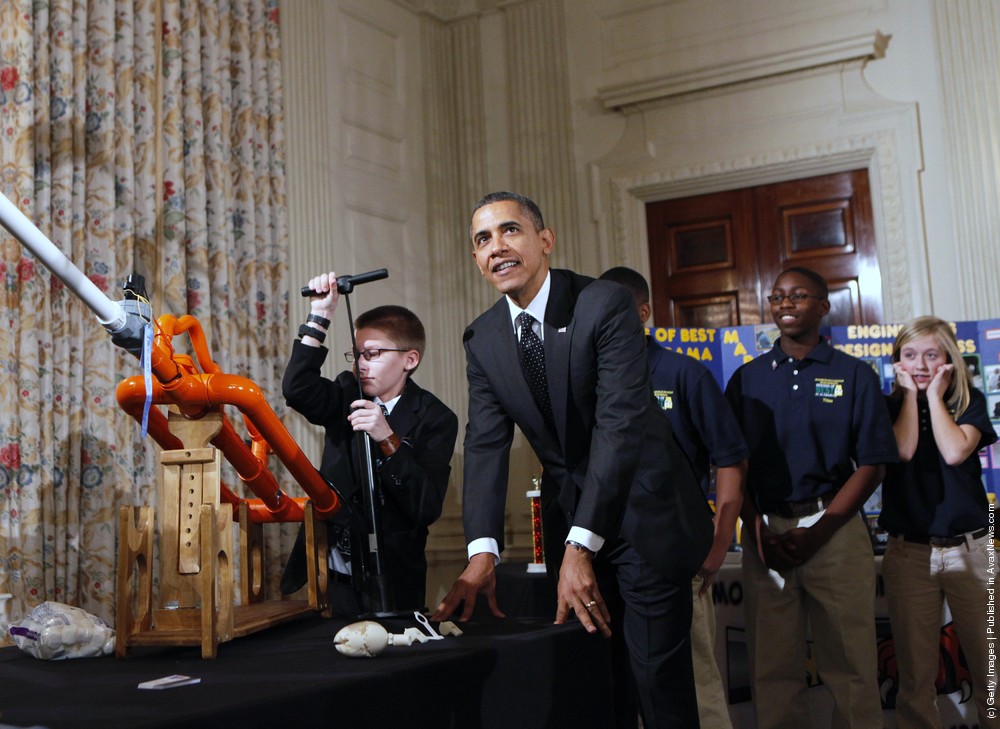
Military Ordinance Device in Australia versus Science Fair Project in the United States
Whilst it appears that Pneumatic Launchers are classified as military ordinance devices under Australian Legislation, the same devices are classified as Science Fair Projects in the United States. I found the following online news article content below:
"President Barack Obama watches as Joey Hudy (L), 14, from Phoenix, Arizona pumps the Extreme Marshmallow Cannon he invented, while touring student science fair projects on exhibit in the State Dining Room at the White House February 7, 2012 in Washington, DC. Obama hosted the second White House Science Fair celebrating the student winners of science, technology, engineering and math (STEM) competitions from across the country. "
(Photo by Molly Riley - PoolGetty Images)
It's interesting to note that in order to demonstrate the same device to the Prime Minister of Australia in Canberra, Joey would be required to be the holder of an 'E' Class Firearms License, which, if he could hypothetically obtain one, would also license him to possess a machine gun, tear gas gun, mortar, bazooka, rocket propelled grenade or cannon.
Whilst it appears that Pneumatic Launchers are classified as military ordinance devices under Australian Legislation, the same devices are classified as Science Fair Projects in the United States. I found the following online news article content below:
"President Barack Obama watches as Joey Hudy (L), 14, from Phoenix, Arizona pumps the Extreme Marshmallow Cannon he invented, while touring student science fair projects on exhibit in the State Dining Room at the White House February 7, 2012 in Washington, DC. Obama hosted the second White House Science Fair celebrating the student winners of science, technology, engineering and math (STEM) competitions from across the country. "
(Photo by Molly Riley - PoolGetty Images)
It's interesting to note that in order to demonstrate the same device to the Prime Minister of Australia in Canberra, Joey would be required to be the holder of an 'E' Class Firearms License, which, if he could hypothetically obtain one, would also license him to possess a machine gun, tear gas gun, mortar, bazooka, rocket propelled grenade or cannon.